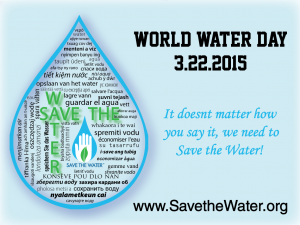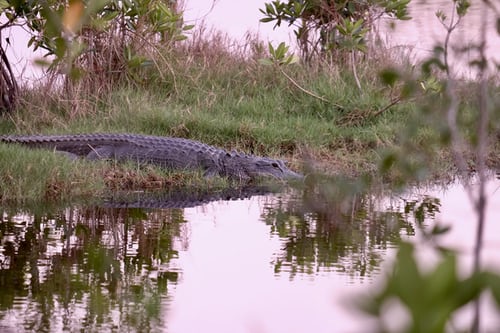By Becky Greiner, Publications Director for Save The Water™ | March 5, 2015
It comprises 70% of our bodies, plays a prominent role in helping us maintain our digestive, metabolic and major organ functions, and in order to stay hydrated we should drink eight glasses a day (1) We think we know about water; that sometimes there are added chemicals such as fluoride or spilled chemicals from industry or agriculture that sometimes contaminate it, but if we use a filtering system or buy bottled, we’ve got it taken care of. We regard World Water Day with casual attention, or disregard it altogether as another story about climate change or global water scarcity, because we think we know our water — and we think our water is fine.
March 22nd, 2015 — this year’s World Water Day — make this the day that we begin to think differently. Because here is what we do not always know about water: the consensus among water professionals is there are up to 80,000 commercial chemicals in our drinking water (2), but modern science only knows how to test for less than 1 percent of these (3). That leaves roughly 70,000 chemicals in any possible combination in American water, with the health effects inside and outside our bodies a complete mystery.
In addition, recent studies by the Environmental Working Group have found that prescription as well as over-the-counter drugs are common in 90% of U.S. water sources. These drugs include antibiotics, anti depressants, birth control and pain killers, to name a few (5). Although the dosages found were small, and thus disregarded as dangerous by the Environmental Protection Agency, these dosages are still ingested on a regular, daily basis.
The numbers and statistics get confounding at this point, but consider this: humans do not face water contamination alone. Dolphins and whales are being increasingly diagnosed with cancer worldwide, which is not a natural disease for them. Literally swimming in so many chemicals has skyrocketed the amount of carcinogens contained in their body fat, pushing their cancer rate higher than in domestic animals and humans (4).
At a time when society is more aware than ever — researching everything from the health effects of food dyes and where their vegetables are grown to how the animals they consume are treated — now is the time to reserve some of that focus for water contamination. Because we think we know about water, but actually, we have no idea.
References
- March 2013. All-water.org. “H2O QuickFacts” http://www.all-water.org/Facts.html. Accessed February 7, 2015.
- February 2015. Safechemicals.org. https://saferchemicals.org/ “What is TSCA?|Safer Chemicals, Healthy Families.” Accessed February 15, 2015.
- January 1st, 2015. Environmental Health Perspectives. https://ehp.niehs.nih.gov/doi/10.1289/ehp.1408601. Accessed February 25, 2015.
- 2004. BlueVoice.org. http://www.bluevoice.org/news_sharedfate.php#Cancer. “Cancer in Dolphins an Emerging Threat.” Accessed February 25, 2015.
- June 1, 2009. Environmental Working Group. https://www.ewg.org/news/testimony-official-correspondence/pharmaceuticals-pollute-us-tap-water. “Pharmaceuticals Pollute U.S. Tap Water.” Accessed February 16, 2015.





